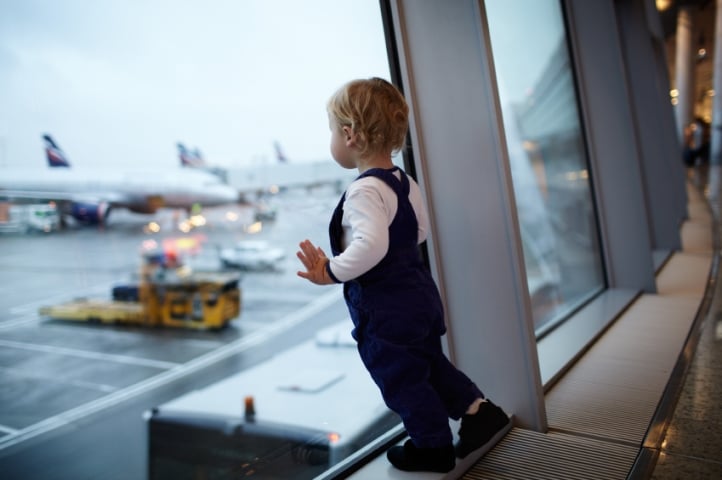

Ready to take your business to new heights? The aviation sector offers producers a vast and stable market
Ever since 9/11, news from the aviation sector seems to be fraught with horror stories, from the disappearance of Malaysia Airlines Flight 370 somewhere in the South Pacific in 2014 to the deliberate crash of Germanwings Flight 9525 in southern France last year.
But the specter of such disasters is only a small part of the aviation industry. The sector is populated by a diverse array of business classes that present interesting and unexpected opportunities for insurers who want to engage in a potentially lucrative and steadily growing market.
From the ground up
Major lines of business within the aviation sector include both international and domestic airlines, aviation manufacturers, airport service providers (such as fuelers, baggage handlers and caterers), privatized air traffic control and drones. There’s also general aviation, which includes anything that flies that is not airline or military, such as corporate aircraft, chartered aircraft, utilities, emergency medical services and news helicopters.
While it may seem strange to lump firmly grounded business classes such as caterers into the aviation sector, there is a good reason for it, says Lori Hunter, a California-based aviation specialist with surplus lines wholesale broker Worldwide Facilities.
“In order to take the food out to the commercial aircraft, the caterers have to put it on lift trucks on the tarmac and load it onto the plane,” she explains. “In a typical claim scenario, the driver operating the lift with the food cart could damage the aircraft, resulting in a very expensive proposition.”
Such a varied sector naturally requires a broad spectrum of insurance products. Manufacturers require aircraft products liability coverage. This product serves several tiers of buyers. At the apex are the people building the aircraft. After that come Tier 1 suppliers – people who make things like engines, avionics and flight control actuation systems. After that come sub-tiers – for instance, people making one piece of metal that goes into those complex items.
“It’s a straightforward coverage, addressing bodily injury and property damage arising out of an aviation product,” says Eric Donofrio, XL Catlin’s North American regional manager for aviation insurance. “If someone alleges your product caused or contributed to an accident, and people on the aircraft were injured or there was property damage on the ground, that’s what this would cover.”
Another common coverage, known as grounding coverage, is more of a financial loss cover. If something happens to an airplane that results in bodily injury or property damage – the engine blows up, for example, and hurts a person or the aircraft – the FAA may ground all of that type of aircraft until the problem is resolved.
“If the FAA mandates grounding, the airlines come to the manufacturer of the product that caused the grounding and say, ‘We are losing revenue because your part caused our aircraft to be grounded,’” Donofrio explains. “This coverage responds to the financial loss a manufacturer might have because their product caused the grounding.”
Airline/general aviation hull and liability coverage responds to bodily injury and property damage if the plane crashes. The coverage works the same way for commercial airlines and the general aviation business class. “Corporate aircraft have the same exposures as a commercial airline – people riding in the aircraft, and people and property outside of aircraft in the event of a crash,” Donofrio says.
Coverage for airport service providers consists of an airport general liability form with coverage specific to airport premises. The coverage is required because P&C policies have exclusions for airport exposures. It is geared toward people providing services inside the airport – aircraft repair, maintenance, fueling, etc.
Products and completed operations coverage insures the airline itself, including its employees. However, if an airline pilot makes a mistake, they derive their protection from the airline’s hull and liability policy.
All aviation policies also have a war exclusion, covering things like terrorism related incidents or outright acts of war. Generally speaking, Hunter says, commercial airlines and major airports are the typical business classes that purchase stand-alone war coverage.
In the global airline industry, there are two different ways of placing insurance coverage: on a quota share basis or on a 100% basis. The way the coverage is placed revolves around the size of the limit. Often, when it comes to the giants of the industry, “the exposure is so significant that no one insurer wants to do it on their own,” Donofrio says.
Airlines tend to buy $1.5 to $2.25 billion worth of cover for any one occurrence. “No one market wants to put out that much limit,” he says. “In a co-participation basis, everyone pays a share.”
Even an aviation manufacturing company buying a comparatively low limit of $5 to $10 million might have a product that is so significant and so likely to cause a loss that one market wouldn’t want to cover it on their own because of the exposure, even though the limit is low.
The other way to place coverage is on a 100% basis, which comes into play for a business with a very low loss exposure, or where the frequency of loss is very low. Smaller, owner-flown aircraft such as corporate jets would fall into this category.
“From a global perspective, most business is transacted on a quota share basis, and people that play on that business in the US are the same internationally,” Donofrio says. “It truly is a global marketplace.”
to be continued...
